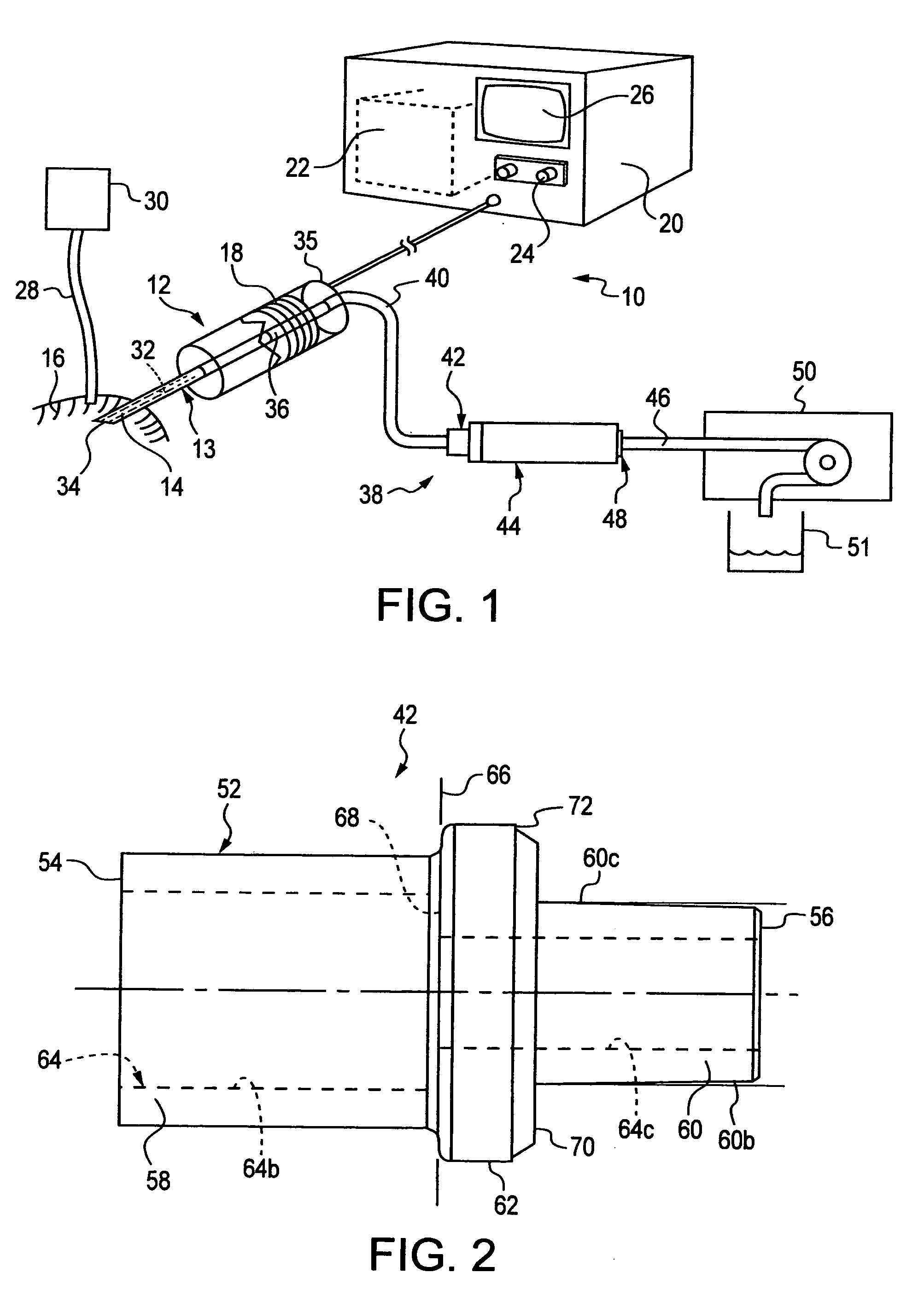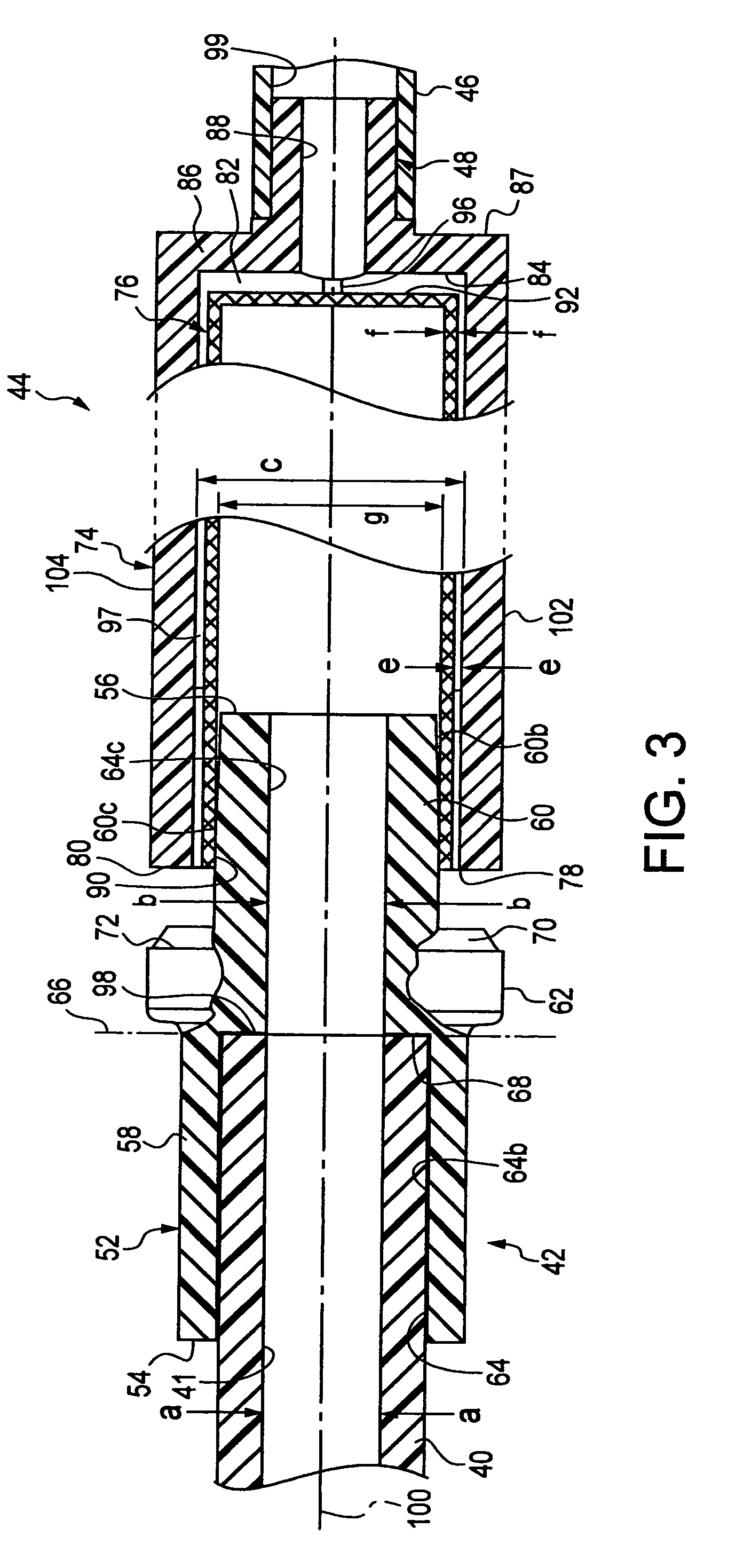Surgical apparatus and methods asociated therewith
a surgical apparatus and associated technology, applied in the field of surgical apparatus, can solve the problems of stalling operation, cornea collapse, efficient operation of the system, etc., and achieve the effect of facilitating dynamic adjustmen
- Summary
- Abstract
- Description
- Claims
- Application Information
AI Technical Summary
Benefits of technology
Problems solved by technology
Method used
Image
Examples
Embodiment Construction
[0055]A surgical apparatus 10, as illustrated in FIG. 1, includes a hand piece 12, containing a needle-like, hollow cannula 13, which is formed with a free-end cannula tip 14 that extends from a forward end 15 of the hand piece. During a surgical procedure, the free-end tip 14 can be inserted into a cornea 16 of a patient's eye, through a small incision formed by the surgeon in the cornea. The hand piece 12 also contains one or more ultrasonic transducers 18 that convert electrical power into mechanical movement to ultrasonically drive the hollow cannula 13 and the tip 14. The hand piece 12 is typically held by a surgeon who performs the surgical procedure, such as, for example, a phacoemulsification procedure (hereinafter “the phaco procedure”), to break a lens, located within the cornea 16 and an anterior chamber of the eye, into particles and residual debris (hereinafter “the particles”).
[0056]The hand piece 12 is connected to a console 20 of the surgical apparatus 10, which incl...
PUM
 Login to View More
Login to View More Abstract
Description
Claims
Application Information
 Login to View More
Login to View More - R&D
- Intellectual Property
- Life Sciences
- Materials
- Tech Scout
- Unparalleled Data Quality
- Higher Quality Content
- 60% Fewer Hallucinations
Browse by: Latest US Patents, China's latest patents, Technical Efficacy Thesaurus, Application Domain, Technology Topic, Popular Technical Reports.
© 2025 PatSnap. All rights reserved.Legal|Privacy policy|Modern Slavery Act Transparency Statement|Sitemap|About US| Contact US: help@patsnap.com



